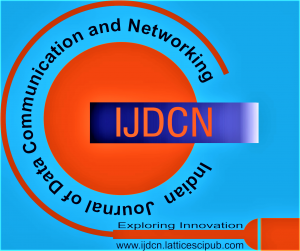AIM
The mission of the Indian Journal of Data Communication and Networking (IJDCN) is to amalgamate scholarly research, academic insight, and corporate application across all domains of data communication and networking in a reader-friendly format. The Indian Journal of Data Communication and Networking (IJDCN) aims to disseminate peer-reviewed articles of exceptional quality in Data Communication and Networking. The published research in the journal is theoretically sound and relevant, offering insightful outcomes for leaders engaged in projects, programs, and portfolios. Consequently, the theoretical and managerial implications of the research are crucial. The Indian Journal of Data Communication and Networking (IJDCN) is committed to seeking exceptional contributions to theory and practice, placing a high value on rigour and relevance.
SCOPE
The scope of the Indian Journal of Data Communication and Networking (IJDCN) encompasses a diverse array of subjects within the field of Data Communication and Networking, including, but not limited to, the following topics:
- Network Architectures
- Routing
- Internet of Things (IoT)
- Authentication & Accounting
- Security & Privacy
- Cross-Layer Optimization
- Multimedia & Real-Time Communication
- Smart Cities
- Network Measurements & Analysis
- Reliability & QoS
- Testbeds for Network Experiments
- Network Coding
- Optical Networks
- High-Speed Networks
- Digital System & Logic Design
- Networked-Driven Multicourse Chips
- Information-Centric Networking
- Opportunistic Networking
- Mobile Networking
- Ubiquitous Networking
- Big Data Networking
- Cloud Networking
- Network Function Virtualization,
- Adaptive Networking
- Network Applications
- 5G & 6G Communication
- Antenna
- Communications Devices
